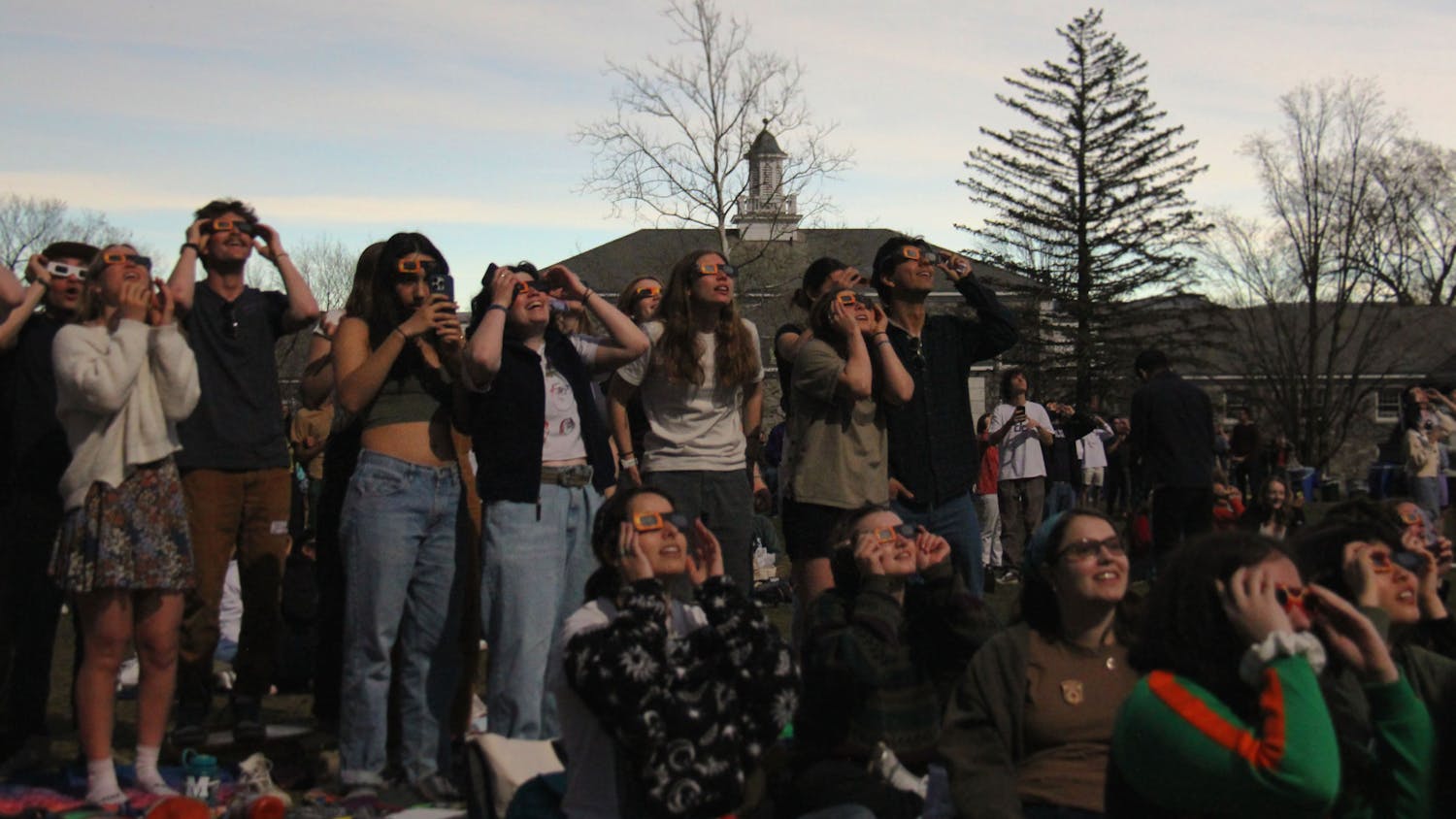A decrease in the amount of federal funding available for science research grants is putting pressure on the College to seek other sources of funding for undergraduate research assistant positions, particularly within the natural sciences. A summer research assistant position demands, on average, between $3,000 and $5,000 of funding, and federal grants have previously comprised a large portion of these grants at the College.
Unlike other educational programs at the College, summer research does not come from department funds or program funds, which are usually used to fund other academic programming. Instead, professors and students can seek funding from a variety of endowed funds, internal grants and scholarships from the Undergraduate Research Office (URO). Professors can also use money from the College’s faculty development fund to hire research assistants.
Outside of the College, federal grants and national scholarships are also available. Due to federal budget cuts, the amount of funding available for grants has dropped, and with it, the number of grants awarded has also decreased.
“I’ve been here 27 years and I’ve had some degree of federal funding for almost all of them, but every now and then one runs out and there’s a gap between the next one coming in,” said Jeff Byers, the Sarah Stewart professor of chemistry and biochemistry. “It just so happens this year, in [the chemistry and biochemistry departments], a number of professors happen to have grants run out.”
Burr Professor of Chemistry and Biochemistry Rick Bunt is one such professor. His grant from the National Science Foundation (NSF) expired last year and has not yet been renewed. He is looking toward internal grants through the College to fund two research assistants in his lab this summer.
The decrease in federal funding has made grants a less reliable resource, and the College is looking to endow research funds to assure financial stability for research assistant positions.
“With federal funding getting tighter and tighter, we’re looking at changes in budgets in a very serious way right now,” said Dean of Curriculum and Faculty Development Bob Cluss. “If it becomes more difficult to continue to win grants from extramural funding agencies, then we’ll have to rely more on college sources to support research positions for students.”
According to Cluss, the College Advancement Office is working “diligently to raise money to endow more positions.”
“I know, for instance, two alumni of my lab who are very successful and wanted to give back to the College … have started to endow research positions,” Byers said. “[In terms of our] long-term ability to support long-term research as an institution, [endowing funds] is kind of a really nice way to keep this going the way we want to keep this going.”
The College anticipates that between 85 and 90 students will be working on-campus this summer as research assistants, 60 of whom will be working in the natural sciences. All will require funding of some sort.
The process of being hired for a summer research assistant position at the College is unstructured, and is dependent upon the preferences and requirements of individual professors. In most situations, professors prefer to work with students with whom they are familiar and who have past research experience, be it at the College or at an outside institution.
“You have to take courses with me first, so that I can get to know you. And then you have to have taken some upper-level courses,” said John G. McCullough Professor of Chemistry Sunhee Choi. “Or, some excellent students, after they have taken my advanced general chemistry and do some shadowing during the semester, if they really like it and they’ve demonstrated their ability to do research, then I will hire [them].”
Interdepartment communication plays a crucial role in finding research positions for students; if one professor cannot offer a spot in a lab, a colleague may have availability or know of another opportunity. The lack of structure in the hiring process, however, can make it difficult to know what or how many opportunities exist.
“We always strive to be sure that we understand what the need is and how best to meet it,” said Cluss. “The priority is to pursue our research goals while also creating opportunites for student-faculty collaboration,” said Cluss.
An increase in the number of students majoring in the natural sciences, and particularly those following the pre-medical track, has resulted in an increased demand for summer research positions. This happens to coincide with a decline in the availability of federal research grants, and thus the amount of money available to fund research assistants. As a result, fewer students than usual will be on campus conducting research this summer within the chemistry and biochemistry departments, according to Byers.
Funding restraints are not the only limiting factor when professors look to hire research assistants, as personal ability to manage students and safely conduct lab research play a major role.
“What I’ve found is my ideal number, with my ability to provide them with a quality educational experience and have room in my laboratory, the number three or four is usually what works for me,” Byers said.
He expects to carry two students in his lab this summer, but noted that more often than not, he is “limited more by the ability of one person to manage a certain number of research assistants than by money.”
While the College is able to offer students a highly personalized and hands-on research experience, large research universities and research institutes offer more positions each summer and provide valuable experiences to those who could not find opportunities at the College.
Under the guidance of Choi, Geoff Vrla ’14 applied and was accepted to the National Nanotechnology Infrastructure Network Research Experience for Undergraduates Program (NNIN REU) summer research program last year. Of the 95 NNIN REU participants last summer, Vrla is one of 15 who was given the opportunity to continue his research at a laboratory in Japan this summer.
“If I hadn’t gotten the scholarship, I would have done research at Middlebury last summer,” Vrla wrote in an email. “Since I was able to work somewhere new, I was able to broaden my research experience and encounter new fields of science that were of interest to me.” Vrla added that the high-tech instruments to which he was given access, such as scanning electron microscopes, cannot be found at smaller colleges and exposed him “to how innovative and exciting research can be.”
Research at the College, by contrast, provides a more collaborative experience, as students are frequently listed as co-authors of published articles and research findings.
“At Middlebury College, we design our research programs so that individual research students … can take a project and maybe if not finish it, at least progress it to the point with their own drive and their own ability and our resources and our time to make real research that’s meaningful research, that’s fundable research, that’s publishable research,” Byers said. “It’s something that they can take their bite out of and push the project while it’s focused on them, rather than someone else’s career.”
For professors, this highly immersive process comes with downsides that students many not be aware of.
“I want students and other general public to know that funds for students is just one factor for the involvement of students in the faculty research,” Choi said. “The more important factor is the total dedication to research by both faculty and students in order to do the meaningful research without wasting government or college funds,” alluding to the challenge of finding highly qualified students to work in her lab, as well as drawing in ample funding.
Science Research Grants Dwindle
Comments



